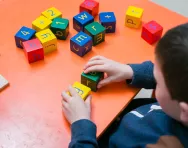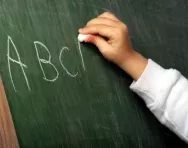Important update from TheSchoolRun
For the past 13 years, TheSchoolRun has been run by a small team of mums working from home, dedicated to providing quality educational resources to primary school parents. Unfortunately, rising supplier costs and falling revenue have made it impossible for us to continue operating, and we’ve had to make the difficult decision to close. The good news: We’ve arranged for another educational provider to take over many of our resources. These will be hosted on a new portal, where the content will be updated and expanded to support your child’s learning.
What this means for subscribers:
- Your subscription is still active, and for now, you can keep using the website as normal — just log in with your usual details to access all our articles and resources*.
- In a few months, all resources will move to the new portal. You’ll continue to have access there until your subscription ends. We’ll send you full details nearer the time.
- As a thank you for your support, we’ll also be sending you 16 primary school eBooks (worth £108.84) to download and keep.
A few changes to be aware of:
- The Learning Journey weekly email has ended, but your child’s plan will still be updated on your dashboard each Monday. Just log in to see the recommended worksheets.
- The 11+ weekly emails have now ended. We sent you all the remaining emails in the series at the end of March — please check your inbox (and spam folder) if you haven’t seen them. You can also follow the full programme here: 11+ Learning Journey.
If you have any questions, please contact us at [email protected]. Thank you for being part of our journey it’s been a privilege to support your family’s learning.
*If you need to reset your password, it will still work as usual. Please check your spam folder if the reset email doesn’t appear in your inbox.
How technology can boost dyslexic children's learning

Mind mapping is a visual learning technique that works by encouraging the brain to form new ideas from one core idea. It can help children to solve problems, organise their thinking, and make confident decisions.
Mind mapping and dyslexia
According to the British Dyslexia Association, problems for children with dyslexia at primary age typically include difficulties in their spoken and/or written language, problems with following instructions, poor concentration and forgetting words. Visual learning techniques, such as mind mapping, are increasingly becoming recognised as a valuable learning tool to support them.
Dyslexic learners tend to be good conceptual thinkers and are often very creative. However, they can be less able to carry out analytical and logical tasks. Mind mapping is particularly useful in this sense because it enables thoughts to be thoroughly formulated in a creative fashion that helps primary school children with dyslexia form their ideas confidently.
Tech-help
Computers are often used to support children with dyslexia, and mind mapping software helps dyslexic children by encouraging non-linear thinking. Add to that the fact that it allows for spelling and grammar checks and involves no handwriting, and mind mapping software becomes a valuable learning tool for helping dyslexic children to learn with freedom and confidence.
There are a number of mind-mapping software packages available. For example, Kidspiration® is a mind mapping solution for primary school age children which uses visual learning to strengthen word recognition, vocabulary and comprehension.
Children can build conceptual understanding in maths, improve their reading and writing, express their creativity and develop critical thinking skills as they combine pictures and words to retell stories or compare literature. These picture mind maps can then be transferred to text outlines. In this way, pupils who struggle with literacy and communicating their thoughts in a linear way can pour all their ideas onto the page, re-organise them, link them up, and then transfer to a text view which shows their ideas in a structured story or argument. Teachers have commented on how this can raise the self-esteem of students who struggle with reading and writing.
With dyslexic pupils often finding it a challenge to communicate ideas orally, being able to use mind mapping software enables ideas to be communicated quickly and without restriction, which can motivate pupils and improve their confidence in their learning.









